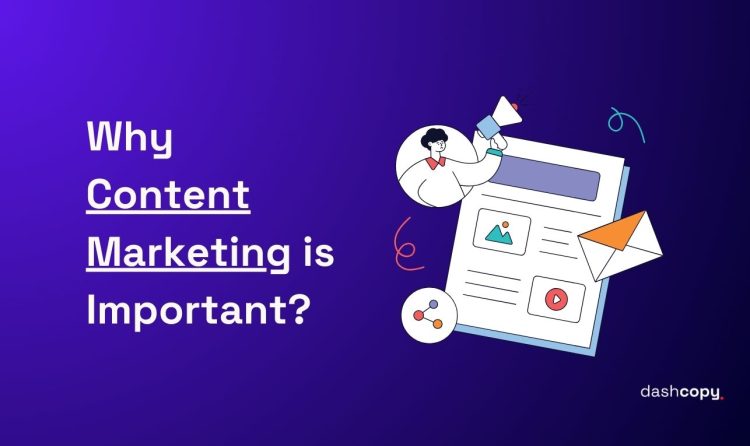Today every business vies for attention from people. Avoid thinking of writing copy as a linguistic exercise; it is actually the process of influencing people into doing something.
Whether designing a social media post, working on a blog post, or coming up with product descriptions, learning how to write good copies will bring you from casual web visitors to loyal customers. And don’t forget, that copy is an essential element in content marketing.
In this blog, we will discuss seven essential copywriting tips that will help you understand your target market so perfectly for you to speak to them.
Hopefully, if you read it carefully and apply the following strategies, it will make your audience glued to your content and cultivate a fan base who trusts your work and becomes your patron. Now it is time to start writing copy that will turn your audience into sales.
1. Know Your Audience Inside Out
As a general rule, one must know one’s audience like the back of one’s hand before ever penning the first word.
This involves getting proper details about the aspects of founding demographics, interests, problems, and incentives. Knowing these factors, you can program what you say and how you say it based on exactly what they want and need.
This is beneficial since it will get your copy to the specific market you intend to target hence achieving a better response from the clients.
The more that is known regarding the audience that is targeted, the better placed the writer to target his or her communication with them.
Such understanding means that you can create relevant material to share, which is the kind that reflects their worries and dreams. Regardless of whether you’re posting a status update, an article for your blog, or forcing copy for your product, this information will lead you on how to make content that touches people and creates engagement.
Use a comprehensive analysis of your target audience, as it is a prerequisite to creating a really effective copy.

2. Craft Compelling Headlines
Writing good headlines is important since they are the initial information that the audience is exposed to. Your headline must be catchy and engage the reader to read more from your piece of work.
To influence people’s emotions, use strong words, apply the technique of asking questions, and state the benefits that may be perceived as desirable by the target audience. All the good headlines are understandable, and brief, and stimulate people’s curiosity so that they will read more.
Your headline is the first and decisive step to grab your reader’s attention to the rest of the content of your piece.
3. Focus on Benefits, Not Features
Emphasize what your product/service can do and have over its competitors, rather than just what is present in the offering.
Every buyer or customer is interested in understanding how your product can make his or her life better or provide him or her with an effective solution. Explicitly define the benefits they will get with your product or service – time, money, or effort saved or a problem addressed.
Your copy should always answer the crucial question: Kin 6: WIIFM Most people whenever they are being persuaded, always tend to ask the above question rhetorically to know what they stand to gain if they agree with what is proposed to them.
You should therefore ensure that all the benefits are enumerated and well passed when persuading your audience, that they need your product/service to improve their lives or their business. This way, your marketing will address potential clients in terms of both reason and feelings, thus making them act.
4. Use Persuasive Language and Calls to Action
Copywriting is a process of writing text in which people are compelled to take a certain behaviour when using the text. Thus, your goal should be to make your audience take the desired action, whether it would be subscribing to a newsletter, buying a product, or setting up a consultation.
Create professional push-call-labels that guide your audience on what to do next, this will be your CTA. Your language of communication should be persuasive, and it should highlight their wants and needs that will compel them to take action.
This way, by inviting powerful and convincing CTAs, one can smoothly lead the targeted audience through the conversion funnel and meet all the set marketing goals.

5. Tell Stories
Stories are effective in writing techniques as people are moved by feelings, which opens the way to understanding.
Share customer stories or experiences on how their life was affected or benefited by the use of your products or services. Why not present these stories as personal and, as such, cut the depth and immediately engage the hearts and minds of your audience to which you wish to relay your message?
Thus, narratives help to show potential benefits for clients when using your products/services and make them interested in talking with your company more.
6. Make it brief and simple
Today very few pay attention to anything online. That is why, to keep the interest, you need to reduce the use of lengthy words. Besides, it is also important to avoid writing complicated and lengthy sentences as much as possible.
Moreover, paragraphs should be divided into bullets and sub-topics so that a reader can easily skim through the content. Precisely, don’t formulate your text in such a manner that a reader would not be able to understand the content.
It is rather preferable to use plain English which will be easier for anybody to understand.: Each of the words should be meaningful, and every word should support your primary concept.
This assists in avoiding a situation where the readers are trapped in unnecessary irrelevant information while seeking the essential information. I have learned that the language should not be complicated and full of jargon for my copy to be effective and interesting.
Always keep it in mind that your main aims are to convey the message to the audience and make them read and comprehend it as quickly as possible.
7. Edit and Proofread Thoroughly
Always spend much time on proofreading, and ensure that you correct all the mistakes that you make. There are features such as character errors which are very unprofessional and affect your credibility.
Before copying your article for the public, always ensure you go through it thoroughly to check for errors. The three C’s are clarity, consistency, and correctness. Demand that your message is definitely clear without having to decipher it.
Another person should look at what you have written as it is advisable to have a second pair of eyes. Though once you wrote, you often fail to see some issues that you can see when you glance through the work of someone else If you can afford it then use the services of a professional editor for a final check.
They are neutral and can always enhance your writing. These make your work to be professional and presentable as required by most organizations and clients. Large and small errors are invariable features of productivity enhancement, so do not let them ruin all your focused efforts.
A strong, credible voice should work on editing and proofreading because they are important tasks. As a form of practice, try and always revise everything that you write. This conveys to the targeted population that you are serious about the quality of the content you are delivering to them and assists in establishing credibility.
Note that the creation of good copy is a process that requires time and daily refinement. Thus, having learned who your clients are, choosing and properly structuring your headlines, emphasizing the benefits of owning or using a certain product, using strong calls to action, telling stories, and using strong, clear, and easy-to-read texts, as well as proofreading your texts, you’ll be able to create perfect sales copy that will sell your idea and turn potential clients into loyal customers. Hope, these copywriting tips help your businesses.
Just remember to always bring yourself out of the writer’s perspective and look at your audience as the reader directly appealing to them. Happy writing!





